#weaving culture
Explore tagged Tumblr posts
Text



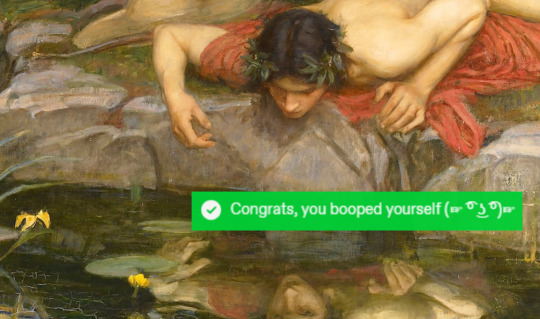

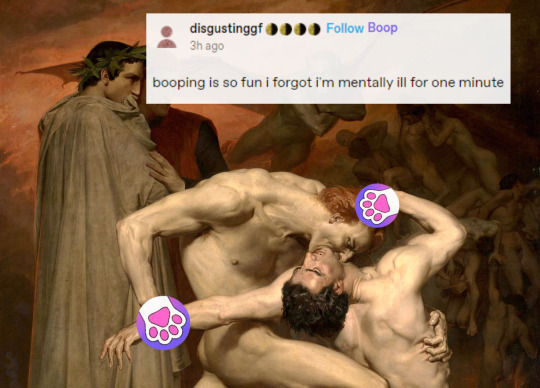





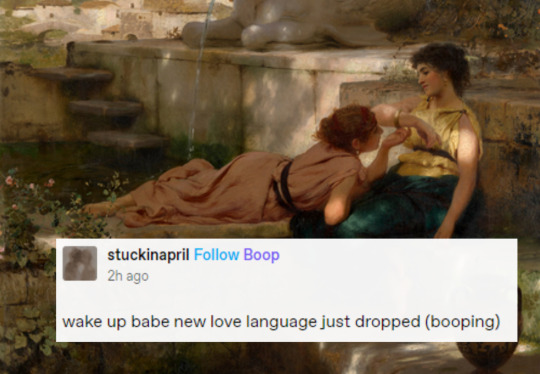


*BOOP* ME IF YOU DARE; COLLECTION
16K notes
·
View notes
Text
Embracing Tradition: Celebrating National Handloom Day
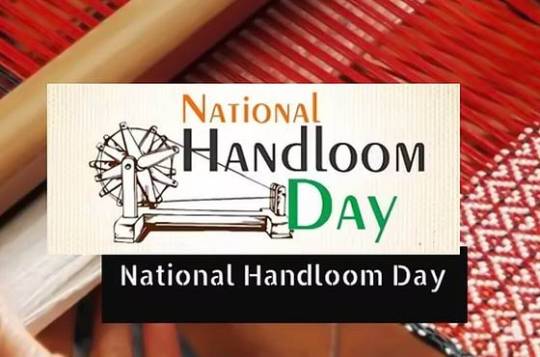
In a world dominated by quick fashion, the craftsmanship, and authenticity of handloom fabrics are enchanting. National Handloom Day, observed on August 7th, recognizes the rich cultural legacy and artistry of handloom weavers throughout India. It is a day to celebrate the complexities of handwoven fabrics and the efforts of innumerable artists who have kept this ancient practice alive for decades.
In July 2015, the Union Government announced August 7th as National Handloom Day to raise awareness about the relevance of the handloom sector to the country’s socioeconomic growth. The date of August 7 was chosen to commemorate the Swadeshi Movement, which was begun on this day in 1905 in Calcutta Town Hall to protest the British Government’s division of Bengal. The movement attempted to revive domestic products and methods of production.

Handloom appreciation has seen a rebirth in recent years, both in India and globally Handwoven fabrics are being embraced by designers and fashion enthusiasts for their elegance, durability, and one-of-a-kind appeal. The Renaissance of handlooms has sparked renewed interest in ancient weaving techniques, encouraging young craftsmen to explore this time-honored trade. Here are a few designers who have embarked on handloom creations.
Sabyasachi Mukherjee: More than a decade ago, Sabyasachi Mukherjee launched his ‘Save the Sari’ initiative, through which he began assisting weavers from Bengal and Andhra Pradesh by commissioning them with ongoing work. Apart from that, the designer is well-known for his handloom sarees composed of Khadi, cotton, and Banarsi fabrics.
Gaurang Shah: Gaurang Shah, a fashion designer and textile revivalist, is recognized for giving old weaves new life. He works with Kanchi-Kalamkari, Khadi-Kanchi, Organza-Kanch, Tussar-Kanchi, and Patan Patola fabrics. He is widely renowned for being the first Indian designer to present Kanjeevarams on a national scale, as well as for revitalizing the Jamdani weaving community.
Abraham and Thakore: Abraham and Thakore are well-known for their handloom work, but they also experiment with a variety of Indian fabrics such as Mangalgiri, Jamdani, and Banarasi brocades. The black and white Ikat design, on the other hand, is their distinctive style. The pair have played a significant role in popularizing this resist dyeing process, from Gujarat’s Patan Patola and its double Ikat to Odisha’s distinctive Ikat.
Anita Dongre: Anita Dongre is well-known for her Banarasi brocade sarees, in addition to her famed gota-patti lehengas. Dongre collaborates extensively with autonomous groups of craftsmen through NGOs such as the SEWA Trade Facilitation Centre.
National Handloom Day is a reminder of the heritage and culture we carry with pride. Filaantro along with Child Help Foundation encourages many such artistry to promote more Handloom creations. Along with it, women are also taught basic design creations so that they can be self-skilled and earn for themselves. As we celebrate this day, let us take a moment to honour the skill, artistry, and perseverance of handloom weavers.
#filaantro#crowdfunding#raise funds#fundraising#nonprofits#donate#volunteering#education#charity#donations#national handloom day#embracing traditions#weaving culture#heritage and culture
0 notes
Text
a phrase that kinda bothers me when talking about women's historical roles in europe is "cooking, cleaning, and taking care of the children." you hear it so often, those exact words in the same order even. and once you learn a little more you realize that the massive gaping hole in that list is fiberwork. im not an expert and have no hard numbers, but i wouldnt be surprised if fiberwork took up nearly as much time as the other three tasks combined, so it's not a trivial omission.
it's not a hot take to say that the mass amnesia about fiberwork is linked to the belittlement of women's work in geneal, but i do think there's a special kind of illusion that is cast by "cooking, cleaning, and taking care of the children." you hear that and think "well i cook and clean and take care of children (or i know someone who does) and i have a sense of how much work that is" and you know of course that cooking and cleaning were more laborious before modern technology, but still, you have a ballpark estimate you think, when in fact you are drastically underestimating the work load.
i also think that this just micharacterizes the role of women's work in livelihoods? cooking, cleaning, and taking care of the children are all sisyphean tasks that have to be repeated the next day. these are important, but not the whole picture. when we include all kinds of fiberwork—and other things, such as making candles or soap—women's work looks much more like manufacturing, a sphere we now associate more with men's work. i feel like women's connection to making and craftsmanship is often elided.
#ofc this is an oversimplification and i am conflating a lot of cultures and time periods#so if you have more specific information to share please do#fiber arts#spinning#weaving
857 notes
·
View notes
Text


Ancient Spindle Whorls Selection, Stewartry Museum, Kirkcudbright, Dumfries and Galloway, Scotland
#ice age#stone age#bronze age#iron age#copper age#prehistoric#prehistory#neolithic#mesolithic#paleolithic#archaeology#ancient textiles#textiles#spindle whorl#weaving#spinning#fabric#material#ancient crafts#ancient living#ancient cultures#archaeological
306 notes
·
View notes
Text








franco colapinto + what gets lost in translation
R.F Kuang, Babel, Or the Necessity of Violence / Miguel de Cervantes, Don Quijote de la Mancha / R.F Kuang, Babel, Or the Necessity of Violence / John Ciardi, Translator's Note in Dante's Inferno
i've seen in the past days multiple interviews by franco in spanish that have been translated to english. there isn't a single way to translate, nor there is there a way to convey everything that is being said when translating. as someone that translates from english to spanish and viceversa frequently, a language does not stand on it's own. it has a culture, a context, mannerisms that don't really exists in the language it's being translated to, and all a translator can do is try and convey everything the best they can just using words.
franco is, after all, argentinian, and has spanish as first language. he prefers to talk in spanish over english, and with the rise of translations due to the amount of interviews he does in spanish, i've seen a lot of either mistranslations or translations that don't fully convey the context or the nuances of what is being said, and act like franco textually said that.
that's why i urge non-spanish speaking people to not take every translation as it is. dig a bit deeper before misinterpreting translations of what he said. language isn't just a mash of words that can be translated one-to-one and still keep the same meaning.
with that said, i want to dedicate this web weaving to @divorcedpierresteban, the ennabler of me making this.
#franco colapinto#f1#formula 1#web weaving#quotes#azda.weaves#this is a veryyy self indulgent web weaving bc yeah <3#kinda tired of seeing ppl drag him multiple times based on translations that are either plain bad or just don't have the context#argentinian and latam culture in general is different to european#and franco is very proud of being argentinian which is great to see#there's subtext there's context there's so much than just the words#ALSOO he's so much funnier in spanish ngl
218 notes
·
View notes
Text



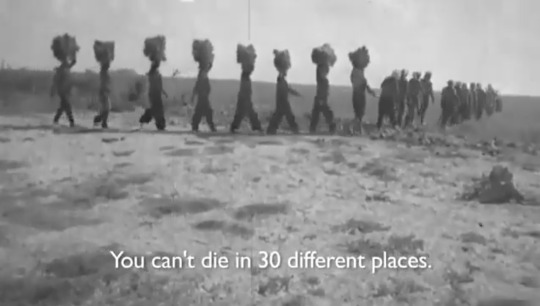



Disappearance as Presence
Fábula y Rueda de los Tres Amigos - Federico García Lorca // Nineteen Seventy Three - Sebastián Picker // Don't Think I've Forgotten: Cambodia's Lost Rock and Roll - dir. John Pirozzi // Untitled (Portrait of Ross in LA) - Félix González-Torres // Hall of Names - Yad Vashem
#web weaving#web weave#disappearance#absence#genocide#Sinn Sisamouth#federico garcía lorca#Yad Vashem#AIDS crisis#art#remembrance#memory culture#macks musings#Sebastián Picker#don't think I've forgotten#khmer rouge#spanish civil war#Cambodian Civil War#Pinochet#Chile#Félix González-Torres
179 notes
·
View notes
Text
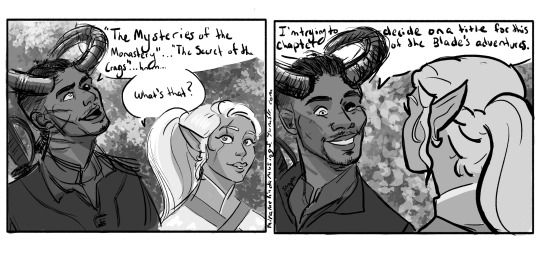
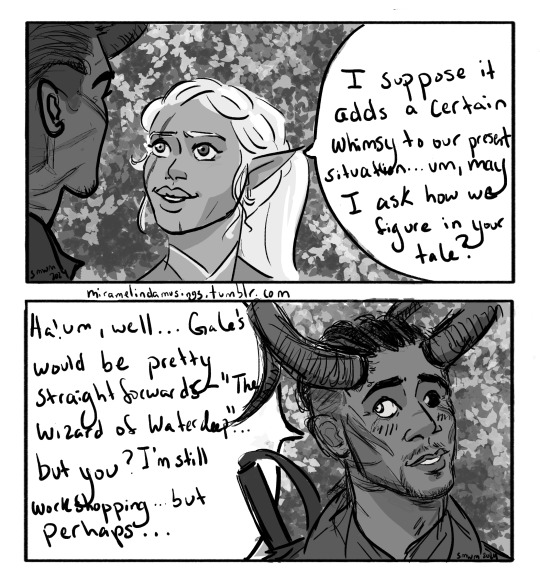
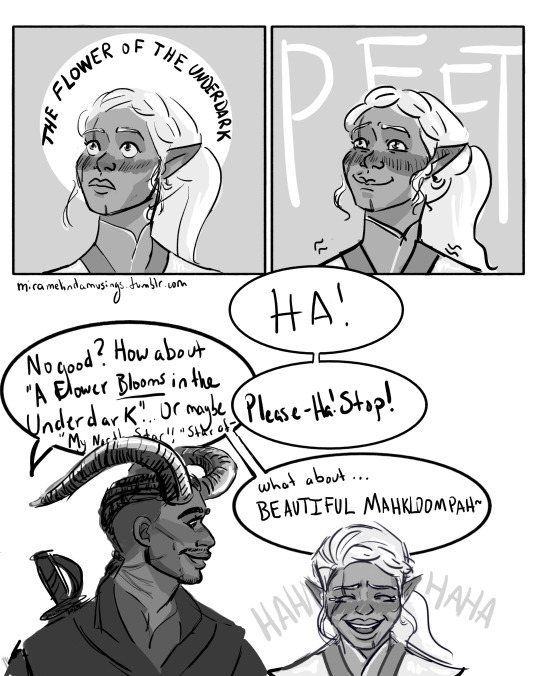
Re-playing BG 3 with a wild magic sorceror Tav. She's a drow named Nimue, and its been a lot of fun! I thought about perhaps Halsin as her romance but, as I kept playing, Wyll really shone and was perfect for this Tav! He's so sweet and funny and I love his banter! I'm only on Act II but I've been enjoying his romance so I thought I would draw something and learn how to draw him and Nimue :)
#bg3#wyll ravengard#wyll x tav#baldur's gate 3#i have a whole backstory for her based on my limited knowledge of drow culture and it was so cool to see how her story weaves with Wyll's!#I wish there was more Wyll content in-game though#I could be wrong but I feel like Gale had more content when I romanced him in my first playthrough#my art#my fanart#digital art#I hope as I keep playing and drawing I'll be able to draw them with more consistency!#I have a few other sketches to clean up and post!
105 notes
·
View notes
Text


Am i a 10th century baddie yet?
After four years of having my viking clothes mostly done, i've finally been made to finish them. My basics were all done back then, but this is more of a fancy summery fit that took a lot more work (especially the weaving)
Dress is based on the Vangsnes pleated dress, it's a super thin wool dyed with madder (the colour is a little uneven sadly)
Woven band is from a similar grave to vangsnes, but in Køstrup, because the vangsnes band is all swastikas
My brooches are NOT historical but just what i have rn :(
Half the beads are made by me, the other half were bought. it might be a bit much ngl but i felt very fancy
#viking age#living history#historical sewing#historical fashion#reenactment#material culture#tablet weaving#iron age
119 notes
·
View notes
Text
There are some things that all troopers know Nat born's will never understand.
All the troopers grew up in a world where perfection was the standard and anything less resulted in death. Where individuality was a crime and being anything more than just another number was a danger, Where saying the wrong thing in front of the wrong person could get you killed.
All troopers know this, but post Kamino the Guards have had it drilled into them all over again. If they want to survive In the Senate they have to fall back on the lessons they learned on Kamino.
The Corries know that there are some things that nat born's will never understand. Things that Nat born's shouldn't understand.
So no one in the guard quite knows how to feel about the strange fallout of the Shiney squad's Jetti Cadets apparent discovery of the Guards position on Courcant.
It starts small, the guard notices that the boy stops being weird about the fact that most of the Corries don't use their names, when asked, the boys. "It's because I know that you have them now." raises more questions than answers, because apparently the boy just figured out that they used their designation numbers around the Senate because their names were a secret on his own. He also seemed to get an unreasonable amount of joy from the fact that all the clones chose their own names.
If it has stopped there then it probably wouldn't be so weird, but it didn't. From sneaking in extra medical supplies and food, (actual food, not just ration bars) when he discovered that 'depur' was cutting their budget for stuff that they needed to function, to the way he seemed to intrinsically understand their need for secrecy, and their reasoning for it. "secrets keep us safe." Without anyone seemingly telling him.
They all agreed that they weren't gonna ask about how the boy had managed to rangle several senators around to the truth of the situation and his point of view with only a few words to one of them. A point of view that not only had them working on trooper sentient rights bills, but also had them aiding in his more under the table helping.
At first it was weird and confusing, both because this kid was a nat born, and because how did a Jetti Cadet develop this kind of understanding, he was a child. It took them a while to connect the dots, Even as the boy started unconsciously dropping hints.
At first it was that weird little nickname he had for the Senate and Senators, in a language that even the most nerdy of Corries didn't seem to understand. They weren't sure what a Depur was, but apparently it applied to the Senate and was probably not a good thing.
The next clue was the stories, because as Anakin spent more time with the guard, becoming more of a Vod'ika than a Jetti Commander and subsequently beginning to learn more and more about the secrets that they kept from the rest of the Senate.
As the boy learnt about the lighter side of the inner workings of the guard, and how to speak the clones particular brand of Mando'a, the guards began to learn stories about Ekkreth, Leia and Ar Amu, stories about secret plots and tricking the The infamous Depur in ways that resulted in the freedom of those he enslaved.
About secret Languages, Tzai, Jappor snippets and secret rituals. About the ways one could steal back some control from the Masters in ways that they would never even notice. About things that the boy claimed that all Slaves should know, lessons that would help keep them safe from their Masters. A term that by now the guards suspended was not referring to the kind the Jedi had.
By the time the boy causally mentioned that he and his mother had been enslaved prior to him being taken to the temple, the Guards already had a pretty decent picture of the situation.
The fact that the boy had been adopting them into his own culture right under their noses had been vastly more surprising. He'd been a little awkward when he'd admitted it. Saying that he knew that they were sort of Mando'ade, but they could be Amavikka too if they wanted.
And sure, maybe it was a little dark that part of the reason the boy spent so much time in the barracks was because it felt familiar, but also this kid cared about every single one of them, to the point where he apparently sees them as family.
Well it really was no wonder that it was agreed that the entire guard would do just about anything for their Ad'ika. Including possibly stopping said Ad'ika from doing the same for them. (Bloody Skywalkers)
#ani and the corries au#padawan anakin#anakin skywalker#the courscant guard#child anakin skywalker#tatooine slave culture#of the fialleril veriaty#i had this thought in the middle of the night#its a long one but i had to write it anyway#Anakin is an Honorary Vode#and he also has several hundred siblings/new family members#they both adopted each other#tw slavery#mostly referenced but its there#the two way culture exchange is my favorite part of this au#mandalorian culture#Clone trooper culture#Corrie guard culture#the image of the Corries kind of mixing the clone brand of there mandalorian heratage with Anakin's Amavikan stories#The guards randomly weaving Amatakka in to there conversations and leaving there other siblings deeply confused#because Anakin never said they couldn't tell the other Troopers about what he told them#but he did say that they should use there own judgement#so they do
424 notes
·
View notes
Text
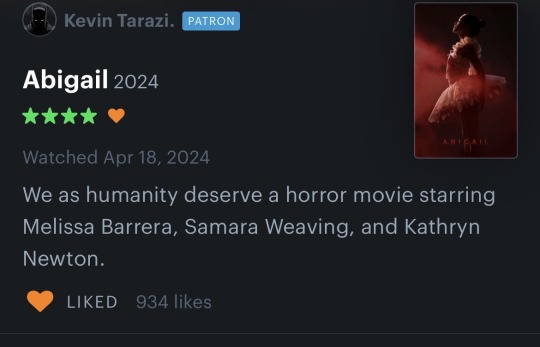
this would become 100% of my personality for the rest of my life
#it would be a cultural RESET#kathryn newton#melissa barrera#samara weaving#abigail 2024#abigail movie
171 notes
·
View notes
Text










South of Midnight, a third-person action adventure set in an original world of magic, monsters and giant, blues-playing skeletons. The game's debut trailer is a cinematic snippet introducing the protagonist, a young woman named Hazel, as she attempts to reason with an immortal specter on a dark dock. Hazel is hunting a monster — or, it's hunting her, as the trailer goes on to show — and she can wield bright threads of magic.
#South of Midnight#video game#Black American folklore#folklore#Gothic#Black goth#mythology#Hazel#Black character#Black characters#Southern culture#Black folklore#Shakin' Bones#Black American culture#magic#weaving#this looks freakin’ amazing!!#Black mythology
1K notes
·
View notes
Text

Kataang Week DAY 3 // Confessions & Whispers
Wanna get out of here?
#kataangtag#katara#aang#kataang week 23#kw23#kataang#again shoutout to heyhanibee’s raava tattoo design that really put the battery in my back#ykw speaking of battery in my back I saw a post yesterday where op said ‘why did I say this like a 74 year old’ and I was like OH GOD#I speak so ELDERLY why didn’t y’all say anything am I a joke to you?! XD but speaking elderly is fun man#My next experiment will be focused on their fashion! I’m really interested in subtly weaving in the culture#kataracies#my art
187 notes
·
View notes
Text

Early Medieval/Late Iron Age Decorated Spindle Whorls, Dumfries Museum, Scotland
#spindle whorl#textiles#ancient cultures#ancient living#ancient craft#ancient textiles#archaeology#ancient design#decorative#iron age#early medieval#relic#stonework#weaving#Scotland#Dumfries
134 notes
·
View notes
Text
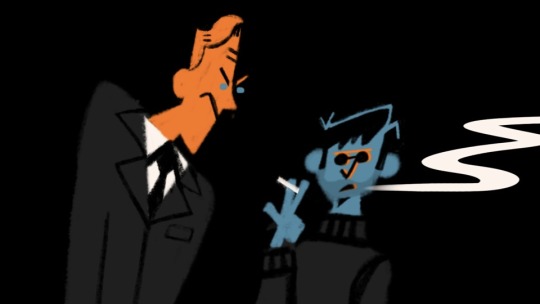










sources: x / x / x / x / x / x / x / x / '97 draft of the iron giant script
#figured a web weave would be the easiest way to transmit my thoughts out into the ether#america's stagnant mainstream culture meets america's progressive counter culture. you get it#jonnie's edits#the iron giant#dean mccoppin#kent mansley#web weaving#web weave
150 notes
·
View notes
Text



‘The Flower of Tujia’ Weaves History and Culture Through 150,000 Meters of Red Brocade Thread
534 notes
·
View notes
Text
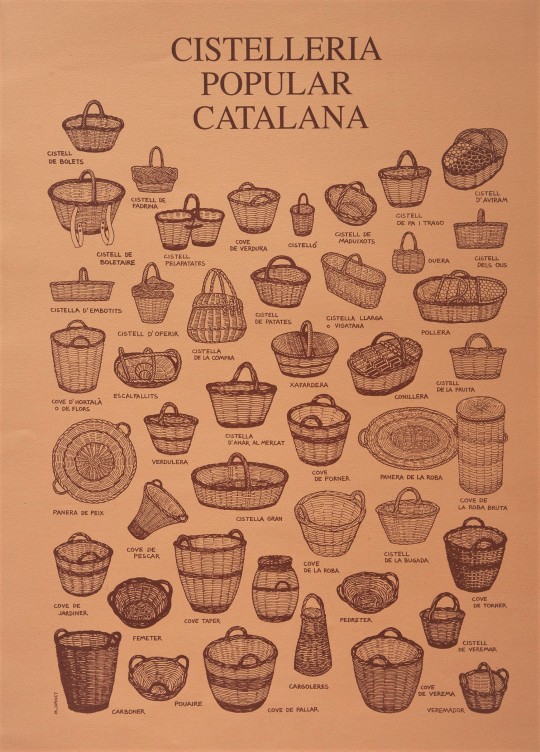
Traditional basketry from Catalonia. Each basket is labeled with its specific use (for example: for picking up mushrooms, for dirty clothes, for doing laundry, for keeping the fish, for carrying a rabbit, for carrying eggs, for going to the marketplace...).
Poster by the Catalan Association of Basketmakers (Associació Catalana de Cistellaires), 1996.
#baskets#basket making#weaving#arts and crafts#crafts#catalunya#poster#ethnography#folk culture#culture#cultures
116 notes
·
View notes